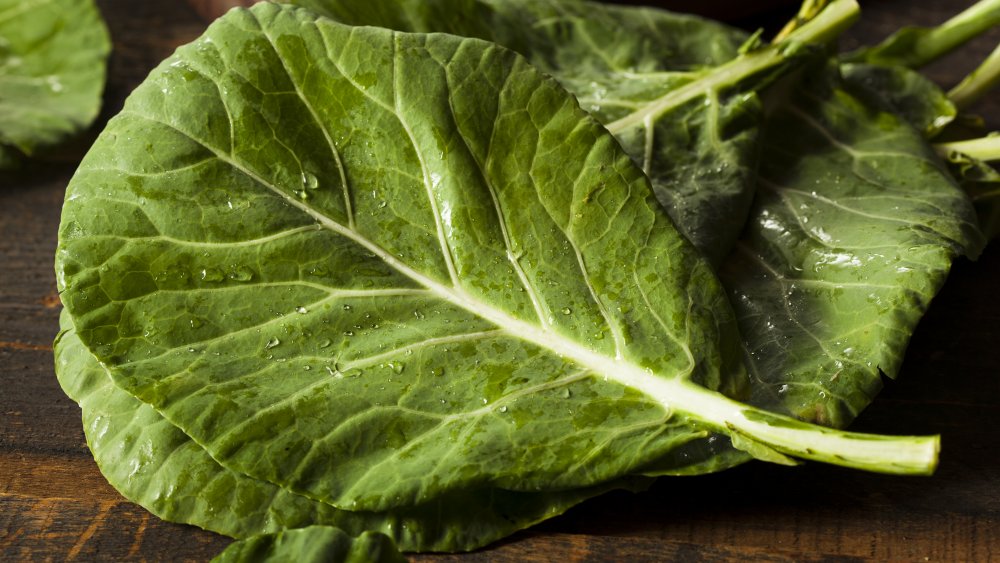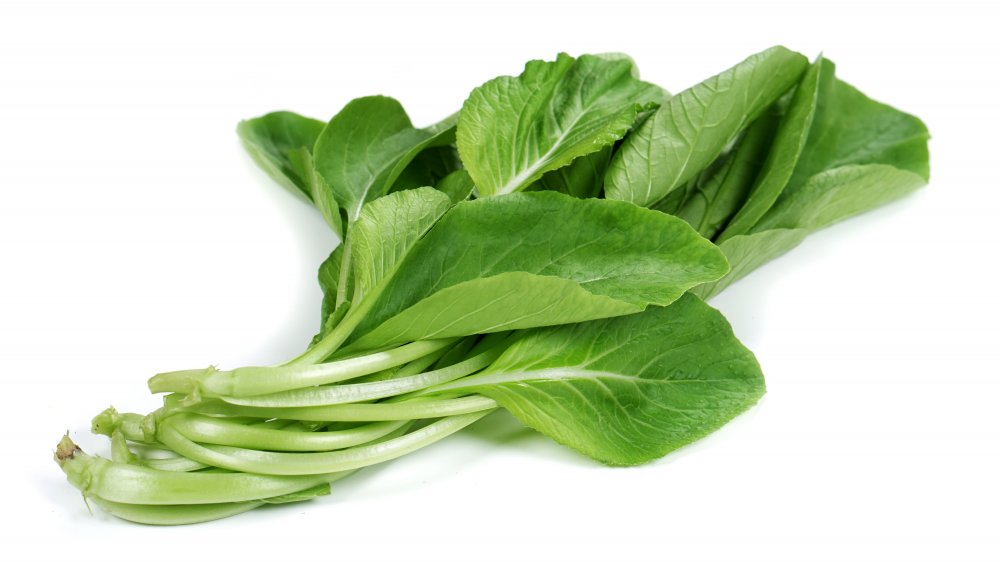The Real Difference Between Mustard Greens And Collard Greens
Greens are one of the best foods you can incorporate into your diet for quite a few reasons. They're full of good nutrients like vitamins, minerals, and fiber, but they're low-calorie. Plus, you can essentially eat as much as you want of them no matter what diet you're on or any food restrictions you may have. However, it can be easy to mix up mustard greens and collard greens. They look similar, and both are commonly used in Southern cuisine (via Epicurious). But there are definitely some differences between the dark, leafy greens.
Collard greens are a close relative of kale as well as cabbage and Swiss chard. Collard greens can grow to be two feet tall, according to Foods Guy, and grow tougher as they grow bigger. They are easy to find no matter the time of year but don't buy ones that have holes or dry edges if you want good, fresh collards.
The seeds of mustard greens are used to make – you guessed it – mustard. These greens have a strong, peppery flavor, and that powerful flavor translates to a powerful nutritional profile, too. These are easy to find at grocery stores too, but can easily grow them yourself too.
The difference is largely about categorization
While both collard greens and mustard greens are both a part of the brassica family of greens, mustard greens are considered an herb. Apart from the very different flavor profiles, these greens offer different levels of vitamins and minerals too.
Mustard greens have slightly more calories, but they also have more protein and fiber. The major nutritional differences come with the percentage of daily intake each has of various vitamins and minerals. For example, mustard greens have 348 percent of vitamin K daily intake while collard greens have 230 percent. Vitamin A is another big jump with mustard greens having 118 percent while collard greens have 48 percent, according to Foods Guy.
Mustard greens have more vitamin C, folate, manganese, and even a bit more calcium than collard greens. However, both have very little calcium compared to the other vitamins and minerals. So, take advantage of the good nutrients mustard greens have by adding it to salads, sautéing them, or even tossing them into soups.

